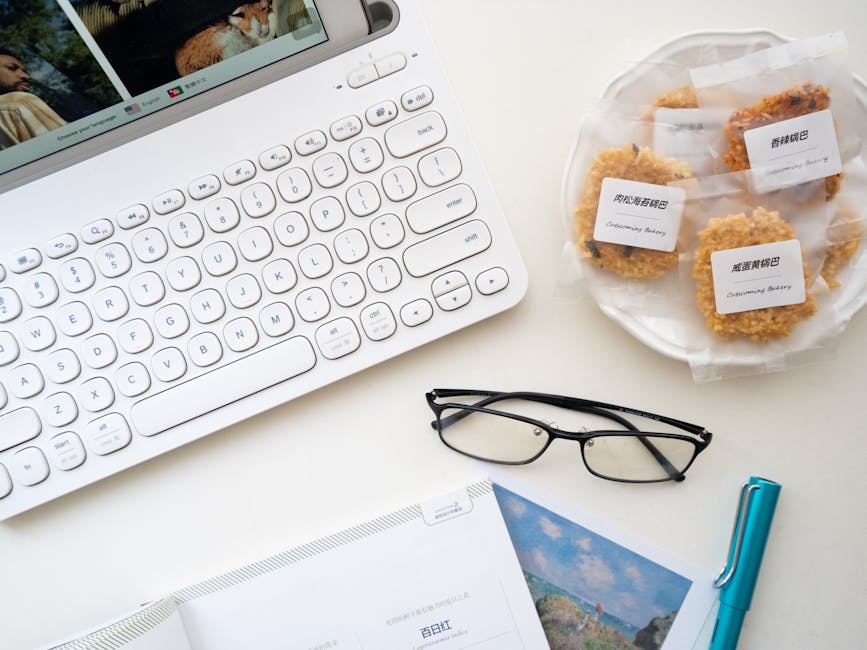Table of Contents
Alright, so it’s 2025, and you just got a new laptop, or maybe you’re just trying to figure out some basic stuff on the one you’ve had for a while. You’d think by now everyone knows how to right-click, right? But honestly, it’s still one of those things that throws people off, especially with all the different trackpads and setups out there. I mean, my little cousin just got her first Chromebook, and the first thing she asked me was, “How do I do that thing you do to open up more options?” She meant right-clicking, obviously. It’s not as straightforward as it used to be with those old clicky buttons on every mouse. Now it’s all about gestures and zones and sometimes, you just gotta know the secret keyboard combo.
I’ve spent way too much time fiddling with different laptops – Windows, MacBooks, even some of those weird Linux ones my dad messes with. And what I’ve found is, while the tech keeps changing, the core need for that “secondary click” stays the same. Whether you’re trying to quickly save an image, change display settings, or just get that little pop-up menu that shows you all the extra stuff you can do with something, you need to right-click. It’s a fundamental move in computing, truly.
The Touchpad Tango: Different Ways to Right-Click on Your Laptop
Okay, so for most folks, the touchpad is the main way they interact with their laptop when they don’t have an external mouse plugged in. And touchpads, oh man, they’ve gotten pretty clever over the years. No more just tapping around randomly. There are a few main ways your laptop’s touchpad probably handles the right-click situation.
The Two-Finger Tap: Your Go-To Move
This is, like, the most common way to right-click on almost any modern laptop touchpad, regardless of whether it’s a Windows machine, a MacBook, or something else. It’s super intuitive once you get the hang of it. You just place two fingers lightly on the touchpad and tap them down at the same time. Not too hard, just a gentle tap. And boom! That contextual menu should pop right up.
I remember when this first became a thing, it felt a bit weird. Like, why two fingers? But after a day or two, it just becomes second nature. It’s pretty slick, actually, because you don’t have to hunt for a specific spot on the touchpad. You can do it anywhere. My friend, who’s always got sticky fingers from snacks, sometimes struggles with this one if his fingers aren’t perfectly aligned, but for most people, it works like a charm.
The Lower-Right Corner Click: The Old-School Vibe
Some laptops, especially older Windows ones or certain budget models, still keep it classic. They actually have a distinct “right-click” zone, usually in the bottom-right corner of the touchpad. You’ll often feel a physical click when you press down there, almost like a separate button built right into the pad.
This method can be a bit tricky if your laptop’s touchpad is super sensitive or if it’s a big, seamless pad without any clear separation. Sometimes you have to press a little harder than you’d expect. What’s interesting is, even if your laptop supports the two-finger tap, this corner click might still work. It’s kinda like a fallback option, you know? My old school laptop from like 2020 had this, and I used it exclusively for years before I realized the two-finger thing was even an option. Live and learn, I guess.
The Physical Button Method: If You’re Lucky
Not many new laptops do this anymore, but some, especially older business-oriented models (think Lenovo ThinkPads or some Dell Latitudes), still come with dedicated physical buttons below the touchpad. One button is for the left-click, and the other is for the right-click. These are super straightforward. You just press the one on the right. Simple as pie.
If your laptop has these, honestly, you’re pretty lucky because they’re foolproof. No gestures, no special taps, just a satisfying click. These are often paired with a trackpoint too, that little red nub in the middle of the keyboard. But that’s a whole other story.
When a Mouse is Your Main Squeeze: Right-Clicking with an External Mouse
Look, as much as touchpads have come a long way, nothing really beats a good old external mouse for precision and comfort, especially if you’re doing a lot of work or gaming. And with an external mouse, right-clicking is as classic as it gets.
Most mice, whether they’re wired, wireless, or Bluetooth, have two main buttons: a left one and a right one. The right-click button is, you guessed it, the one on the right. You just press it down. It’s typically the slightly less used button, unless you’re constantly pulling up context menus. Some mice also have extra buttons on the side, but those are usually for custom actions, not the standard right-click. My gaming mouse has about a million buttons, but the main right-click button is still right there on the top right. It’s universal, pretty much.
The Keyboard Shortcut: The Hidden Gem for Right-Clicking
So, what if your touchpad is acting up, or maybe you just prefer keeping your hands on the keyboard? There’s a super handy keyboard shortcut for right-clicking, and honestly, not enough people know about it. It’s a real lifesaver sometimes.
The most common way to do it is to press Shift + F10. Yeah, I know, not super obvious, but it works on almost any Windows laptop. Just hold down the Shift key and then tap F10. This brings up the same contextual menu you’d get with a mouse right-click, right where your cursor is currently located or on whatever item is selected. It’s pretty neat for when you’re flying through documents and don’t want to lift your hand to the touchpad.
Another option, which isn’t on every keyboard but is on many, is the Context Menu key. It usually looks like a tiny menu icon, sometimes with an arrow pointing to it, or it might just be an icon of a little square with three horizontal lines. It’s usually located somewhere near the right Alt or Ctrl key, often between the right Alt and the right Ctrl key on standard desktop keyboards, or tucked away near the arrow keys on some laptops. If your laptop has this key, you just press it, and boom, instant right-click menu. This one’s my personal favorite if it’s available because it’s a single press. Super efficient, I think.
A Few More Things to Keep in Mind (Stuff I’ve Noticed)
Sometimes, your right-click isn’t working, or it’s acting weird. This can happen for a few reasons.
First, touchpad drivers. Yeah, I know, boring technical stuff, but it’s important. Sometimes, especially after a big system update, your touchpad drivers can get a little wonky. Reinstalling them or updating them usually fixes it. You can usually find these in your laptop manufacturer’s support section online. I had this happen once after a Windows update, and I thought my laptop was broken, but it was just a driver issue.
Second, touchpad settings. Most laptops let you customize how your touchpad works. You can usually find these settings in your system preferences or control panel (on Windows, search for “touchpad settings” or “mouse settings”). You might accidentally have the two-finger tap option turned off, or maybe the corner click is disabled. It’s worth a look if things aren’t behaving like you expect. Sometimes, you can even switch the primary and secondary click, which would really mess with your head if you did it by accident!
And then there’s accessibility. Some operating systems have accessibility features that let you remap keys or create custom gestures. If you’re really struggling with the standard methods, you might be able to set up a different way to right-click that feels more comfortable for you. It’s not something most people mess with, but it’s good to know it’s there.
It’s actually pretty wild how many ways there are to do something as simple as right-clicking. It kinda shows how much thought goes into making computers work for all sorts of people and different ways they like to interact. From those old clunky trackpads to the super smooth glass ones we have now, the basic function is still there, just delivered in slightly different flavors. What’s important is finding the method that feels natural for you and just sticks. For me, it’s mostly the two-finger tap now. But for my dad? He’s still all about that external mouse. To each their own, right?
FAQs: All About Right-Clicking on Your Laptop
So, after all that, you might still have some burning questions. Here are a few common ones I hear people ask about right-clicking on laptops.
How do I right-click on a laptop without a mouse?
Well, you’ve got a couple of solid options right on your laptop itself. The most common way is the two-finger tap on your touchpad – just place two fingers down and tap them together. If that doesn’t work, try pressing down on the very bottom-right corner of your touchpad; some laptops have a dedicated click zone there. And if all else fails, use the keyboard! Press Shift + F10 or look for the special Context Menu key (it usually looks like a little menu icon) near your right Alt/Ctrl key.
Why isn’t my laptop right-click working?
Oh, that’s super frustrating when it happens! Usually, if your right-click stops working, it’s because of a couple of things. One common reason is that your touchpad drivers might be outdated or corrupted; sometimes, you need to update or reinstall them from your laptop manufacturer’s website. Another reason could be your touchpad settings – sometimes the two-finger tap or corner click option gets accidentally turned off in your system’s mouse or touchpad settings. It’s always worth checking those first.
Can I customize the right-click behavior on my laptop?
Yeah, most laptops let you mess with this a bit, especially on Windows machines. If you go into your system’s “Mouse settings” or “Touchpad settings” (just type “mouse settings” into the Windows search bar), you’ll usually find options to adjust things like sensitivity, scroll direction, and what different gestures do. Some more advanced touchpads even let you customize the two-finger tap or switch which corner does the right-click. It’s pretty cool to make it work exactly how you like it.
Is it possible to right-click using only one finger on a touchpad?
Not really, not directly for the right-click action itself. A single tap or press on the touchpad is almost always interpreted as a left-click. The two-finger tap (or sometimes a specific corner press) is specifically designed to differentiate it as a right-click. If you could right-click with one finger, it’d be a total mess, accidentally popping up menus all over the place when you’re just trying to click something normally.
What’s the best way to right-click if I have trouble with fine motor skills?
That’s a really good question, and luckily, there are options. For some people, using a dedicated external mouse with clear, distinct buttons can be much easier than a touchpad because the physical click is more definite. Also, relying on the keyboard shortcuts like Shift + F10 or the Context Menu key (if your keyboard has it) can be super helpful, as it just requires pressing keys rather than precise finger placement on a touchpad. Additionally, looking into your operating system’s accessibility settings might offer some custom remapping or alternative input methods that could make it easier.












